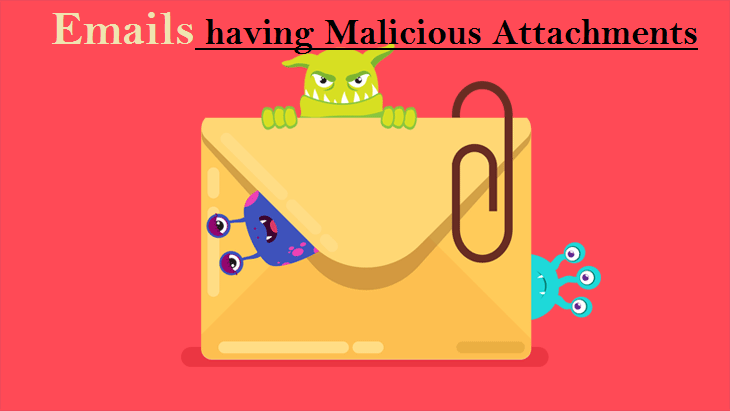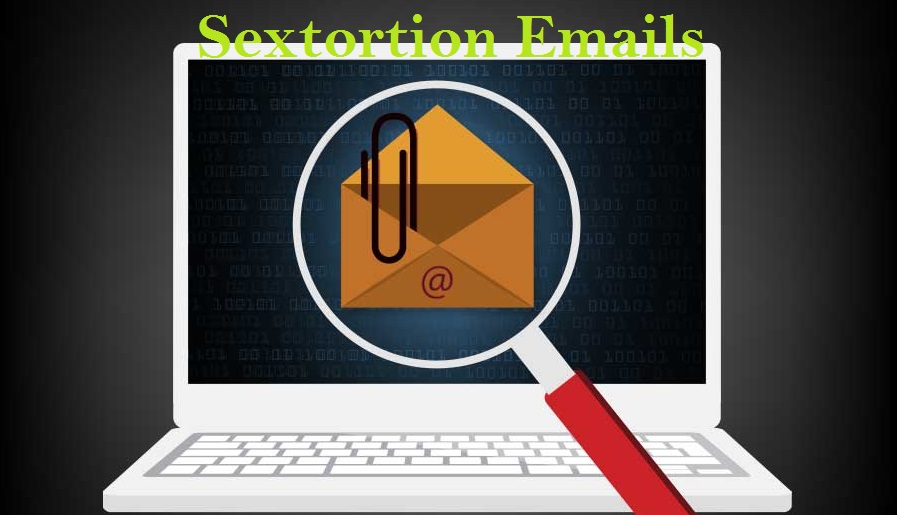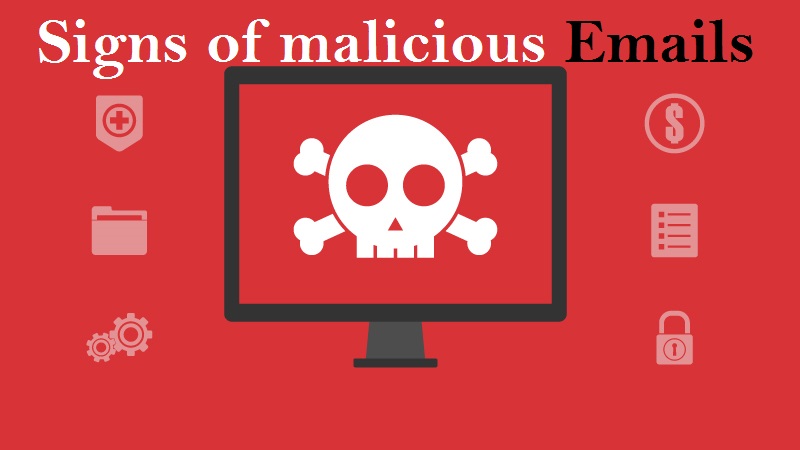Don’t Get Trapped by the Hallo viezerik Email scam
Hallo viezerik Email is a sextortion scam. This bogus email is a Dutch Version of the most infamous ‘I want to inform you about a very bad situation for you‘ scam. This bogus email starts circulating about a month ago.
The sender of this email claims to have sensitive information about you and demands payment usually in Bitcoin. The sender of this email claims they have some compromising videos/photos of the recipients. If the they deny to pay, their private photos/videos will be leaked in public domain.
This deceptive email claims that the recipient’s PC was hacked and the scammers were able to track their online activities. This email uses scare tactics to threaten the recipients and manipulate them for paying. The senders of this email demand the payment in Cryptocurrency due to the untraceable nature of cryptocurrency transactions.
Its noteworthy to mention that your device was never hacked and the scammers don’t have any of your personal details. It’s just a tactic to scare the recipients. The one and only purpose of the scammers is to steal your crypto funds.
So if you receive email that begins with “Ik wil je informeren over een zeer slechte situatie waar je in terecht bent gekomen.” Do not get panic and never send cryptocurrency to the listed wallet. Keep in mind that once you pay the scammers you won’t be able to retrieve your funds.
Here’s an example of the “Hallo viezerik” Scam Email:
Hallo viezerik,
Ik wil je informeren over een zeer slechte situatie waar je in terecht bent gekomen.
Je kunt er echter van profiteren als je verstandig handelt.
Heb je gehoord van Pegasus?
Dit is een spywareprogramma dat op computers en smartphones wordt geïnstalleerd en waarmee hackers de activiteiten van apparaat eigenaren kunnen controleren.
Het geeft toegang tot je webcam, messengers, e-mails, gespreksverslagen, enz. Het werkt op Android, iOS en Windows. Ik denk dat je al weet waar ik heen wil.
Het is al een paar maanden geleden dat ik het op al je apparaten installeerde,
omdat je niet kieskeurig was over welke links je aanklikte op het internet.
In deze periode ben ik alles te weten gekomen over je priveleven, maar een aspect is van speciaal belang voor mij.
Ik heb veel video’s opgenomen van jou, terwijl je je aftrekt aan zeer controversiële pornovideo’s.
Gezien het feit dat het “twijfelachtige” genre bijna altijd hetzelfde is, kan ik concluderen dat je een zieke viespeuk bent.
Ik betwijfel of je wilt dat je vrienden, familie en collega’s dit ook weten. Binnen slechts een paar klikken kan ik hiervoor zorgen!
Elk nummer in je contactenlijst zal plotseling deze video’s ontvange – op WhatsApp, op Telegram, op Skype, op e-mail – overal.
Het wordt een tsunami die alles op zijn pad wegvaagt, en in de eerste plaats je volledige leven.
Zie jezelf niet als een onschuldig slachtoffer.
Niemand weet waar je vieze gedachten vandaan komen en waar ze naar kunnen leiden,
dus beschouw dit als een verdiende straf om je tegen te houden. Beter laat dan nooit.
Ik ben een soort God die alles ziet. Maar geen paniek.
Zoals we weten is God genadig en vergevingsgezind, en ik ook. Maar mijn genade is niet gratis.
Maak 1450 EUR over naar mijn bitcoin portemonnee: 16691trULjLy1nscmMAJJi5bxULBUWBr9F
Zodra ik de bevestiging van de transactie heb ontvangen, zal ik alle video’s die je in gevaar brengen permanent verwijderen,
Pegasus van al je apparaten verwijderen en uit je leven verdwijnen. Je kunt er zeker van zijn – ik wil alleen wel geld.
Vergeet niet dat ik binnen een seconden je leven kan verwoesten.
Ik krijg een melding wanneer je mijn e-mail opent, en vanaf dat moment heb je precies 48 uur om het geld te sturen.
Als cryptocurrencies onbekend voor je zijn, maak je dan geen zorgen,
het is heel eenvoudig. Je hoeft alleen maar te googelen op “crypto exchange” en dan is het niet moeilijker dan wat nutteloze spullen kopen op Amazon.
Ik waarschuw je met klem voor het volgende:
) Beantwoord deze e-mail niet. Ik heb het verzonden vanaf een tijdelijk e-mailadres, dus ik ben niet op te sporen.
) Neem geen contact op met de politie. Ik heb toegang tot al je apparaten en zodra ik erachter kom dat je naar de politie bent gerend, worden er video’s gepubliceerd.
) Probeer je apparaten niet te resetten of te vernietigen. Zoals ik hierboven al zei: Ik hou al je activiteiten in de gaten,
dus je gaat akkoord met mijn voorwaarden of de video’s worden gepubliceerd.
Vergeet ook niet dat cryptocurrencies anoniem zijn, dus het is onmogelijk om mij te identificeren aan de hand van het opgegeven adres.
In terms of email-based cyber threats, what are the different types of malicious emails?
Emails having Malicious Attachments

Email spam containing malicious attachments is a commonly employed method by cybercriminals to compromise users’ computers with malware. Malicious attachments often harbor trojans that possess the ability to pilfer sensitive data such as banking details, passwords, and other confidential information.
The primary objective of cybercriminals in these attacks is to deceive their potential victims into accessing a compromised email attachment. They commonly employ email messages that discuss recently obtained invoices, faxes, or voice messages to accomplish this aim.
If an unsuspecting individual succumbs to the trap and opens the attachment, their computer becomes infected, allowing cybercriminals to gather a substantial amount of confidential data.
Although it is a more intricate technique to pilfer personal data (as spam filters and antivirus programs typically identify such endeavors), if cybercriminals achieve success, they can access a broader spectrum of information and continue accumulating data over an extended duration.
Phishing Emails

Typically, cybercriminals employ deceitful emails to deceive individuals on the internet into divulging their confidential personal information, such as login credentials for diverse online platforms, email accounts, or online banking details.
These types of attacks are commonly known as phishing. In a phishing attack, cybercriminals typically send an email that mimics the branding of popular services like Microsoft, Amazon, DHL, or Netflix. They craft messages with a sense of urgency, such as incorrect shipping details or expired passwords, and include a hyperlink, hoping to entice unsuspecting recipients into clicking on it.
Upon clicking the provided link in these email messages, victims are redirected to a counterfeit website that closely resembles the legitimate one. In this deceptive environment, victims are prompted to enter their password, credit card information, or other sensitive data, which is subsequently harvested by cybercriminals for malicious purposes.
Spam Emails

Spam emails are unsolicited, bulk messages sent to a large number of recipients simultaneously. They often contain unwanted advertisements, scams, or fraudulent offers. The primary purpose of spam emails is to promote products, services, or websites, sometimes of dubious nature.
These emails can be sent by individuals or automated bots, and they often target a wide range of recipients without their consent. Spam emails can clog up inboxes, consume storage space, and pose risks such as phishing attempts or malware distribution.
Sextortion Emails

This type of email is a form of phishing known as a “sextortion scam.” It preys on individuals’ fears and attempts to blackmail them into paying a ransom. The scam email falsely claims that a cybercriminal has gained unauthorized access to the victim’s webcam and possesses a compromising video recording of them engaging in explicit activities.
The scammers leverage the potential embarrassment and shame associated with such content to coerce the victim into paying a ransom, often in the form of cryptocurrency, to prevent the release of the alleged video. However, it is crucial to understand that these claims are entirely false and fabricated.
What are some indicators or signs that can help identify a malicious email?

To spot a malicious email you can look for the following indicators:
Suspicious Sender: Check the sender’s email address and verify if it matches the official contact information of the organization or person they claim to represent. Be cautious of email addresses that contain misspellings, random numbers, or unfamiliar domain names.
- Poorly Written Content: Pay attention to grammar and spelling mistakes, unusual language, or poor formatting. Legitimate organizations usually maintain professional communication standards.
- Urgent or Threatening Language: Beware of emails that create a sense of urgency, pressure you to take immediate action, or threaten negative consequences if you don’t comply. Scammers often use fear or time-sensitive situations to manipulate victims.
- Suspicious Attachments or Links: Be careful of email attachments or links, especially from unknown or unexpected sources. Don’t open attachments or click on links unless you are confident about their legitimacy. Hover over links to see the actual URL before clicking.
- Requests for Personal Information: Legitimate organizations typically don’t request senstive information, such as passwords, Social Security numbers, or credit card details, via email. Avoid providing personal data unless you are certain of the email’s authenticity.
- Unusual Requests or Offers: Be wary of emails offering unexpected rewards, prizes, or financial opportunities. If something seems too good to be true or doesn’t align with your normal interactions, it could be a sign of a scam.
- Suspicious Email Design: Poorly designed or visually inconsistent emails may indicate a scam. Watch for generic greetings, mismatched logos, or distorted images.
If you have doubts about an email’s legitimacy, it’s best to err on the side of caution. Avoid clicking on links or downloading attachments, and consider contacting the sender through a verified channel to verify the email’s authenticity.
What actions can be taken if you have fallen for an email scam?

Below are the steps you should take if you’ve fallen prey to the Hallo viezerik Email Scam Scam.
- If you have mistakenly provided your credit card information after clicking on a link in a phishing email, it is crucial to immediately contact your bank and inform them about the situation. It is highly likely that you will need to take steps to cancel the compromised credit card and request a replacement for enhanced security.
- If you have inadvertently provided your password after falling for an email scam, it is essential to promptly change your password. Typically, cybercriminals gather stolen login details and sell them to other malicious groups for potential exploitation. By changing your password immediately, you reduce the likelihood of criminals having sufficient time to cause harm or unauthorized access to your accounts and information.
- If you notice any indications of identity theft, it is important to promptly reach out to the Federal Trade Commission (FTC). The FTC will gather information about your situation and develop a personalized recovery strategy.
- Assist in safeguarding fellow internet users by reporting phishing emails to organizations such as the National Fraud Information Center, Anti-Phishing Working Group, FBI’s Internet Crime Complaint Center, and the U.S. Department of Justice.
- If you have inadvertently opened a malicious attachment, it is likely that your computer has been compromised. To address this, it is advised to conduct a thorough scan of your system using a reliable antivirus software. We suggest utilizing SpyHunter 5 for Windows to help mitigate any potential threats.
⇓⇓Download Spyhunter 5 Free Scanner⇓⇓
Do make sure to read SpyHunter’s EULA and Privacy Policy. Spyhunter free scanner downloaded just scans and detect present threats from computers and can remove them as well once, however it requires you to wait for next 48 hours. If you intend to remove detected threats instantly, then you will have to buy its licenses version that will activate the software fully.
Frequently Asked Questions
Why was I included in the distribution of this email?
Phishing emails are often disseminated by threat actors through extensive campaigns, leading to thousands of recipients receiving comparable messages.
If I have viewed a spam email but refrained from opening the attachment, is there a possibility that my computer has been infected with malware?
Simply opening or reading an email does not pose a direct risk of malware infection. The actual threat arises when you interact with malicious attachments or links contained within the email, triggering potential malware download or installation processes.
If I downloaded and opened a file from a spam email, does that mean my computer is infected?
If the file you opened from a spam email was an executable file (.exe, .run, etc.), there is a high chance that your computer may be infected. However, if the file was a document format (.doc, .xls, .one, .pdf, etc.), the risk of infection may be lower as these formats usually require additional actions to initiate the download or installation of malware, such as enabling macros or clicking on embedded content.
If I have unknowingly shared my personal information in response to a deceptive spam email, what steps should I take to mitigate the potential risks?
If you have mistakenly shared your login credentials, it is crucial to change the passwords for all affected accounts promptly. Additionally, if sensitive personal information like identification documents or credit card details were disclosed, it is important to promptly notify the relevant authorities or organizations responsible for handling such incidents.
Is SpyHunter 5 capable of detecting and eliminating malware infections that may be present in email attachments?
SpyHunter 5 is powerful security software that is specifically designed to scan devices and effectively remove various types of malware infections. With its comprehensive scanning capabilities, it can detect and eliminate most known malware threats, including those that may be present in email attachments and pop-up notifications. Running a thorough system scan is crucial to ensure that all potential threats are identified and removed from your device.


